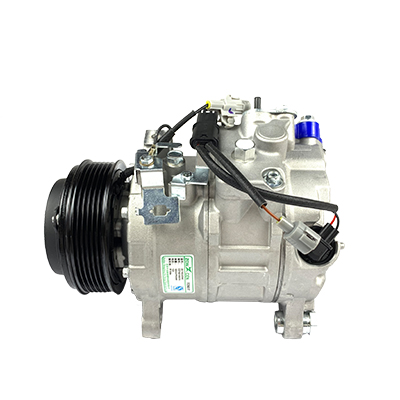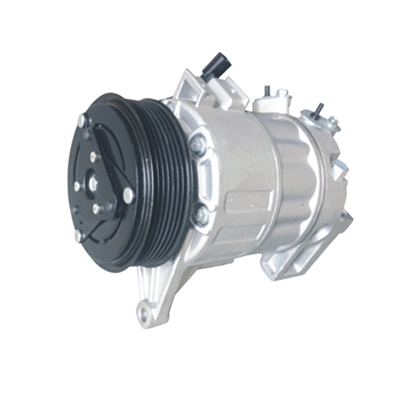
Optimizing NEV Energy: Variable-displacement Compressors
Explore how variable-displacement compressors are revolutionizing energy efficiency in New Energy Vehicles' air conditioning systems. Learn about the latest innovations in NEV technology and the quest for sustainability in automotive engineering.
ZHONGCHENGAs the automotive industry transitions towards sustainable mobility solutions, New Energy Vehicles (NEVs) have emerged as a promising alternative to traditional internal combustion engine vehicles. Central to the efficiency and performance of NEVs is the optimization of every component, including the air conditioning system. In this article, we delve into the challenges of energy efficiency in NEVs and explore the role of variable-displacement swash plate type compressors in mitigating these challenges.
The Rise of New Energy Vehicles
New Energy Vehicles encompass a spectrum of electrically propelled vehicles, including Battery Electric Vehicles (BEVs), Plug-in Hybrid Electric Vehicles (PHEVs), and Fuel Cell Electric Vehicles (FCEVs). These vehicles offer the promise of reduced greenhouse gas emissions, improved air quality, and decreased reliance on fossil fuels. However, achieving optimal energy efficiency remains a key challenge, particularly in ancillary systems such as air conditioning.
Energy Efficiency Challenges in NEVs
Power Consumption Concerns
The electrification of vehicles introduces new challenges in managing power consumption. Energy-intensive systems, such as the air conditioning compressor, can significantly impact the vehicle's range and overall efficiency. Traditional fixed-displacement compressors operate at a constant capacity, leading to suboptimal energy utilization under varying cooling demands.
Temperature Control Precision
Maintaining cabin comfort while minimizing energy consumption poses a delicate balancing act. In NEVs, where energy resources are finite, achieving precise temperature control becomes imperative. Conventional air conditioning systems struggle to adapt to fluctuating cooling requirements, resulting in energy wastage and reduced driving range.
Thermal Management Complexity
The integration of high-voltage electric systems in NEVs exacerbates thermal management challenges. Heat generated by power electronics and battery systems must be efficiently dissipated to ensure optimal performance and longevity. Inadequate thermal regulation can lead to system inefficiencies, component degradation, and compromised safety.

The Role of Variable-displacement Swash Plate Type Compressors
Variable-displacement swash plate type compressors offer a compelling solution to the energy efficiency challenges plaguing NEVs' air conditioning systems. By dynamically adjusting compressor capacity in response to cooling demands, these compressors optimize energy utilization and enhance overall system performance.
Adaptive Capacity Modulation
The hallmark feature of variable-displacement compressors is their ability to modulate compressor output based on real-time cooling requirements. By varying the swash plate angle, these compressors adjust piston stroke length, effectively matching compressor capacity to the cabin's thermal load. This adaptive capacity modulation minimizes energy wastage during low cooling demand periods, maximizing efficiency and extending driving range.
Precision Temperature Control
Variable-displacement compressors excel in delivering precise temperature control, a critical requirement in NEVs. Their ability to maintain consistent cabin temperatures under diverse operating conditions ensures passenger comfort without compromising energy efficiency. By eliminating temperature fluctuations, these compressors optimize energy utilization and enhance overall driving experience.
Thermal Management Optimization
Efficient thermal management is essential for maximizing the performance and longevity of NEV air conditioning systems. Variable-displacement compressors play a pivotal role in this regard by minimizing heat generation and optimizing heat dissipation. Their adaptive capacity modulation ensures that compressor operation aligns with thermal load demands, mitigating thermal stress on critical components and enhancing system reliability.

Conclusion
In conclusion, variable-displacement swash plate type compressors represent a paradigm shift in addressing energy efficiency challenges in New Energy Vehicles' air conditioning systems. Their adaptive capacity modulation, precision temperature control, and thermal management optimization capabilities make them indispensable components in the quest for sustainable mobility solutions. As NEVs continue to gain traction in the automotive market, the integration of variable-displacement compressors will play a pivotal role in maximizing energy efficiency, extending driving range, and advancing the transition towards a greener, more sustainable future.
-
Routine Maintenance Tips for Auto Air Conditioning Compressor
 2024-04-22
2024-04-22
-
Essential Inspections Before Using Your Auto Air Conditioning Compressor
 2024-04-18
2024-04-18
-
Advantages of AC Compressors: Enhancing Comfort and Efficiency
 2024-04-10
2024-04-10






